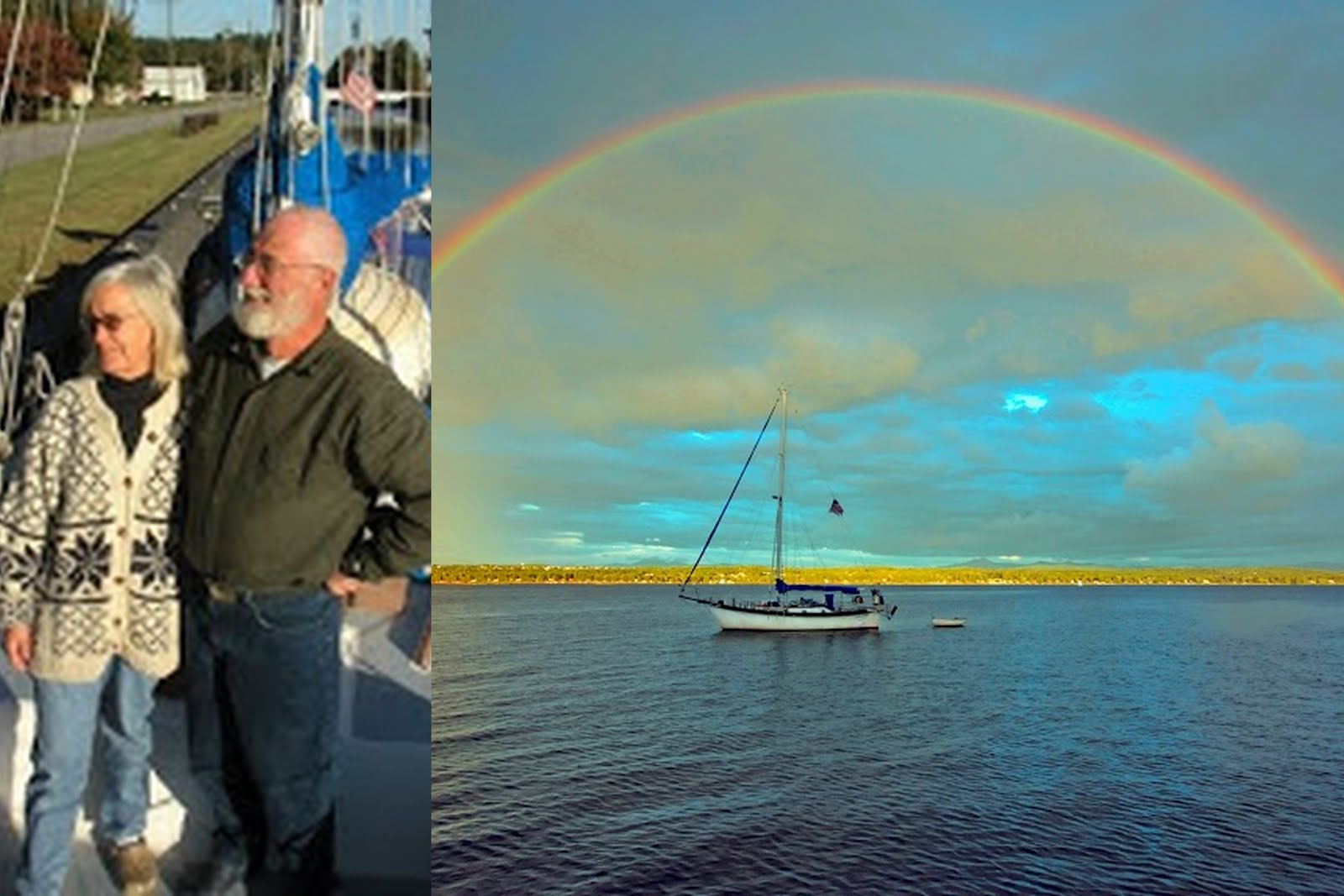NoLL

Not all readers of this blog are boat experts. For their benefit I'd like to explain the difference between full and partial keels.
Have a look at the picture above. It shows two sailboats propped up by jack stands at Deltaville Boatyard. The boat on the right has a full keel. The boat on the left has a partial keel. We say that the left boat has a fin keel and a spade rudder.
Keels serve several purposes on a sailboat. Most important, they provide resistance to to boat moving sideways through the water. They also provide ballast that helps the boat resist heeling (tipping). They also help the boat to resist yaw; keeping the bow from swinging right and left. Finally, they provide a little bit of lift, like an airplane wing, to help pull the boat to windward.
Boats like Tarwathie will full keels, do all the above very well. They are optimized for blue water sailing where making the boat keep moving straight ahead with no slip and no yaw is most important. Unfortunately, full keels also produce a lot of drag in the water, which makes the boat slower.
Most modern boats use fin keels and spade rudders, like the boat to the left in the picture. They are much lighter. They have less drag, which makes the boat faster. They also allow the boat to turn on a dime, which is advantageous for racing and when maneuvering for docking.
The fin keel spade rudder design has its own disadvantages. The rudders are attached via rudder posts which go up through a hole in the hull. Many such boats have problems with water leaking in around the rudder post, or worse getting the rudder stuck. Running aground is also risky for those boats, the fin keel and the spade rudder are easy to damage in such situations. Indeed, many of the boats being worked on in this boat yard have rudder post problems. Note Tarwathie's rudder in the picture below. She has no rudder post at all. Her keel, rudder and propeller are also well protected from damage when we run aground.

Another advantage to partial keel boats is that they are steerable when backing up. Full keel boats are very difficult to back. In theory, Tarwathie should pull to port when backing because of the direction the propeller spins. She does that about 2/3 of the time. The other 1/3 of the time she does the opposite. It's very exasperating and embarrassing when I need two, three, four or more attempts to back in to a slip while everyone is watching.
You may also note that Tarwathie is a double-ended boat. That means she comes to a point both at the front and the back. Compare that to the squared ends on the two boats in the first picture. That pointy rear end costs us a lot in terms of usable storage. The advantage comes when at sea. When a big wave comes from behind and smashes into the flat back of most boats, it tends to make the boat yaw. They can become very difficult to steer. Double ended boats are much easier to keep pointing straight ahead.
Every boat design trades off one feature versus another. Blue water boats are optimized for blue water sailing. They are best out there in the ocean where one never backs up, and where one continues day after day in a straight line.





No comments:
Post a Comment
Type your comments here.
Note: Only a member of this blog may post a comment.